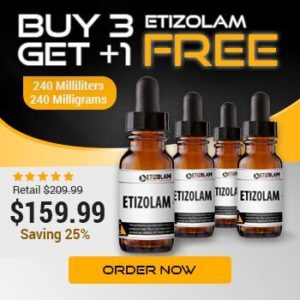What are these drugs?
Though both these drugs are used for the treatment of anxiety, panic attack and insomnia, there are certain differences in their chemical compositions and mechanisms of action. Etizolam is a thienotriazolodiazepine (typically a benzodiazepine analog) drug consisting of thiophene and triazole ring fused together at its core. Phenibut is a GABA (Gamma-Amino-Butyric-Acid). It is an analog contracted from β-phenyl-GABA. GABA is the inhibitory neurotransmitter that is found in our brain that calms down hyper-stimulated neurons and thus keeping them away from bursting out of control. A typical GABA analog can be effectively used for the treatment of anxiety and other depression-related syndromes.
Differences in their mechanisms of action
Phenibut
It is essentially a GABA analog as has already been mentioned. Now, the addition of phenyl group to the molecular structure of GABA, phenibut bears the intrinsic capability of crossing the blood brain barrier which normal GABA (produced naturally by our brain) cannot cross. This barrier needs to be traversed over to control anxiety and depression, and this is how phenibut works. The fundamental function of phenibut is to build potassium channel inside the brain cell membrane and restore them. As a result, the excessive excitations of the hyper-stimulated neurons are hindered, and this is believed to be the reason behind anxiety control. Thus, in a nutshell, phenibut holds superiority in functioning than general GABA (naturally produced or even supplements) only due to the extra phenyl group that is added to GABA.
Etizolam
When it comes to etizolam, its efficiency in fighting depression is way more than Phenibut. It influences GABA causing the brain to increase its production and slow nerve impulses. Its working principle is somewhat similar to Benzodiazepines; the only difference being its selective and precise mode of operation. It is exceptionally proficient in binding only the specific receptor sites in the brain that are responsible for anxiety. The result is substantial alleviation of anxiety and depression. Pharmacologically, etizolam is absorbed by the human body at a faster rate compared to phenibut with the peak plasma level reached between 30 minutes to two hours. This is the prominent reason behind etizolam’s better efficiency in fighting anxiety than phenibut.
Some other differences
The biological half-life of etizolam is about 6.2 hours compared to phenibut’s 5.3 hours which means the dependence liability in case of etizolam will be lower than phenibut. Phenibut, due to some of its intrinsic properties, is also a potent cognitive enhancer supplement, unlike etizolam. However, when it comes to dependence, tolerance and withdrawal symptoms, etizolam (due to its reverse tolerance effect) holds the upper hand. When compared regarding the quantity of dosage, half amount of etizolam (say 0.5mg) will give the same anti-anxiety effect as will be given by 1mg of phenibut. And the duration of effect is also more for etizolam than phenibut. Researches, however, suggested that overdose of etizolam possesses more adverse liabilities than phenibut.
To encapsulate the comparison, as a potent anti-depressant, anti-anxiety drug, etizolam is superior to phenibut. However, phenibut, unlike etizolam, doesn’t come under the sedative genre. But, it is also true that withdrawal of etizolam is easier, and there is no such issue of ‘phenibut hangover’; a side effect associated with phenibut. To conclude, the selection of any one of this drug must be purely under proper medical supervision and biological feasibility of that particular individual.



